4 1: Distinguish between Job Order Costing and Process Costing Business LibreTexts
During production, the materials processed by workers and machines become partially manufactured products. At any time during production, these partially manufactured products are collectively known as work in process (or goods in process). For example, if accountants compute the inventory when the company has partially finished products at the end of the year, this inventory is Work in Process Inventory. Process costing determines the average cost per unit for an entire production process. At this point, Hannah’s company needs to precisely track the material cost and labor costs that are needed to make a batch of shirts. If a worker incurs 3 hours of time working on batch number 112, the gross wages have to be reclassified from labor control to work-in-process.
- To make the most of your costing system, create an annual budget and cost for both direct and overhead costs.
- Look at the expense categories and note each overhead cost and the amount spent before.
- Material and labor costs that cannot be traced directly to the product produced are included in the overhead costs that are allocated in the production costing process.
- Process costing results in large quantities of identical or similar units.
To make the most of your costing system, create an annual budget and cost for both direct and overhead costs. On a monthly basis, if you use job costing review each completed job and compare the budgeted cost to your actual cost. If https://www.wave-accounting.net/ you use process costing review your cost by batch instead of individual job. If you find that actual costing more than 10% higher than your budget, revisit your budget to determine whether or not your assumptions are reasonable.
Job costing is used by a variety of businesses for a variety of reasons and can be an effective method to price products and services. When the products are completed and transferred to the finished goods storeroom, the company removes their costs from Work in Process Inventory and assigns them to Finished Goods Inventory. As the goods are sold, the company transfers related costs from Finished Goods Inventory to Cost of Goods Sold. When a batch of shirts is finished, the total cost to move from work in process inventory to finished goods inventory, which indicates the products are ready for sale.
The difference between job costing and process costing
Raw materials are stored in the materials storeroom and delivered to the appropriate production department—cutting, painting, or assembly/finishing. The design department uses direct labor to create the design specifications, and, when completed, it sends them to the production department. The production department uses the material and design specifications and adds additional labor to create the sign.
1 Distinguish between Job Order Costing and Process Costing
In these industries production is customized and tailored to each customer’s needs. When ABC Clothing starts production on a particular batch of shirts, costs are tracked in the work-in-progress account. Costs in this account are actual costs which may differ from your budget. Each job is different, depending on the size of the home, whether or not the items are packed ahead of time or to be packed in advance of the move, and the distance between homes. The estimated manufacturing overhead value can be compared to the actual manufacturing overhead value in a separate manufacturing T-account to determine any significant differences. What’s important is that every overhead cost is allocated with the same process and the costs have to be included in each job estimate.
Each of these processing departments will be a work-in-process center. So a job costing system may have only one work-in-process, while a process costing system will have several. What would happen, if down the line, they decide to do special custom planners for different customers?
With the job costing approach, your business completes work on a project basis. This is the case for plumbers, mechanics, freelancers, movers, and anyone who works in a trade or provides customers an estimate before doing any work. As an example, law firms or accounting firms use job order costing because every client is different and unique. Different amounts of resources, quickbooks online vs quickbooks desktop whether materials or labor, or another resource, are used in each of the job orders. Of course, two customers might go to Joey’s auto repair shop to get an oil change, but Customer A has an imported car, which makes it difficult and time-consuming to reach the oil filter under the car. Customer B, who has a domestic car, has an easy to get to the oil filter.
1: Distinguish between Job Order Costing and Process Costing
This will require the use of the equivalent unit computation, and management selects the method (weighted average or FIFO) that best fits their information system. Marshalls does not produce a product yet still needs a system to assign overhead costs to the products it sells. (Overhead was addressed in Building Blocks of Managerial Accounting.) And while Chili’s has the same nationwide menu, it needs a system to collect the costs for each menu item within each location. Job costing is used for very small production runs (or even single-unit jobs), and process costing is used for large production runs.
The difference between process costing and job order costing relates to how the costs are assigned to the products. In either costing system, the ability to obtain and analyze cost data is needed. This results in the costing system selected being the one that best matches the manufacturing process.
For example, a bank provides the same service of receiving deposits to all customers. Another one would be that a company manufactures computer chips for thousands of customers. The concept here is that a company makes many numbers of a product and sells that exactly similar product to everyone.
Since each coffee mug goes through the same manufacturing process, the firm will use a process costing system. Understanding the full manufacturing process for a product helps with tracking costs. This video on how drumsticks are made shows the production process for drumsticks at one company, starting with the raw wood and ending with packaging.
Additionally, each homeowner has different preferences, so no staircase is identical. The firm uses what is called a job order cost sheet to track direct materials, direct labor, and cost driver activity for each staircase manufactured. From the measurements, the firm knows exactly how much direct material, or wood, is needed. Also, the production workers track the time it takes to build each staircase, so direct labor is accounted for. Manufacturing overhead is allocated based on the cost driver direct labor hours. Process costing is used when products are manufactured through a continuous production process, resulting in large quantities of identical units.
Days Sales Outstanding: What Is It and How To Calculate It
Commonly, the overhead rate may be derived by applying overhead costs on the basis of labor hours or machine hours. This means that the company uses labor hours or machine hours (i.e., the primary cost driver) to reasonably estimate manufacturing overhead costs. Joey works at an auto repair shop that provides various services for a variety of vehicles. Laura works at a factory that manufactures millions of microchips for computer processors. Although these two people work in very different companies, they both have something in common.
What is Job Costing?
The system used should be determined by weighing the cost of collecting the data and the benefit of having that information. There are various cost accounting techniques used to measure the cost of the product. When the goods are produced only against special orders, job costing is used by firms. On the other hand, when a product passes through several processes or stages, the output of one process becomes the input of next process, and to determine the cost of each process, process costing method is applied.
Process costing is used for standardized or mass-produced items, with costs accumulated per production process or department. Often, process costing makes sense if the individual costs or values of each unit are not significant. For example, it would not be cost effective for a restaurant to make each cup of iced tea separately or to track the direct material and direct labor used to make each eight-ounce glass of iced tea served to a customer. In this scenario, job order costing is a less efficient accounting method because it costs more to track the costs per eight ounces of iced tea than the cost of a batch of tea.
Costing is simpler in this system because rather than having to prepare a costing sheet for many products, we only need to do costing for three departments or processes. In these types ofoperations, accountants must accumulate costs for each process ordepartment involved in making the product. When overhead is underapplied, manufacturing overhead costs have been understated and upward adjustments need to be made to inventory and/or expense accounts, depending on which method the company decides to use. Process costing is a method of assigning costs for a mass quantity of a product or service.

